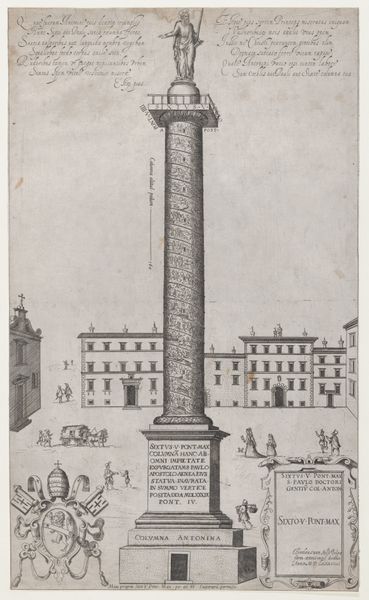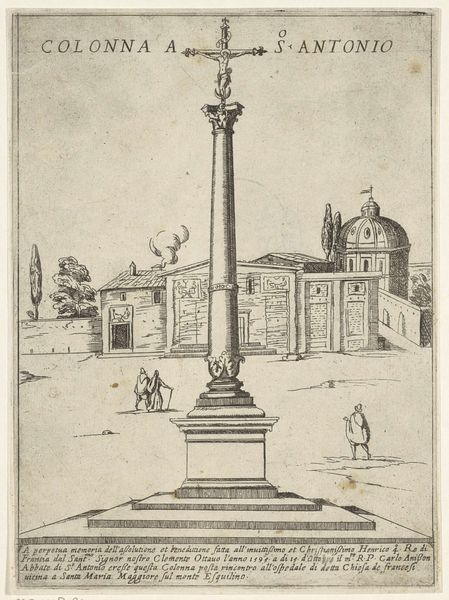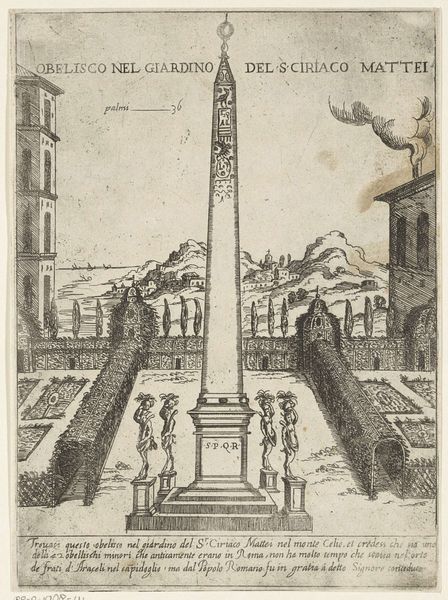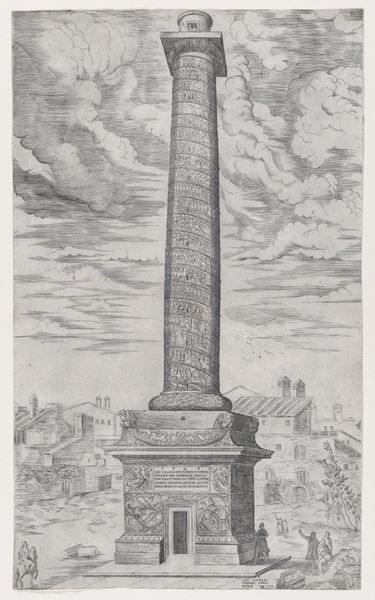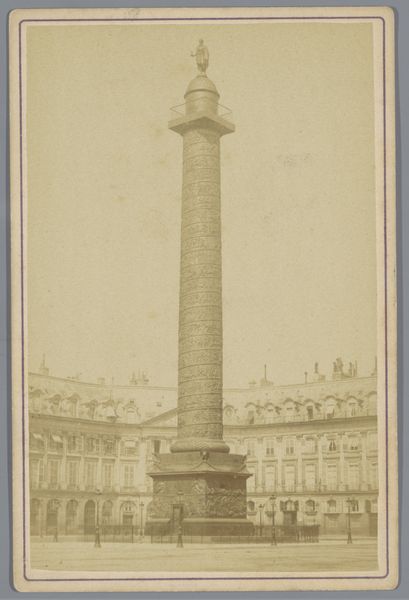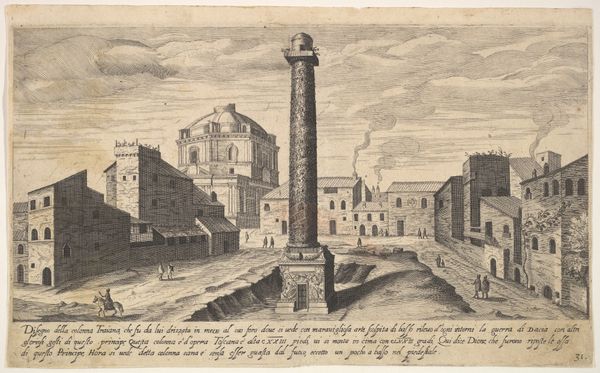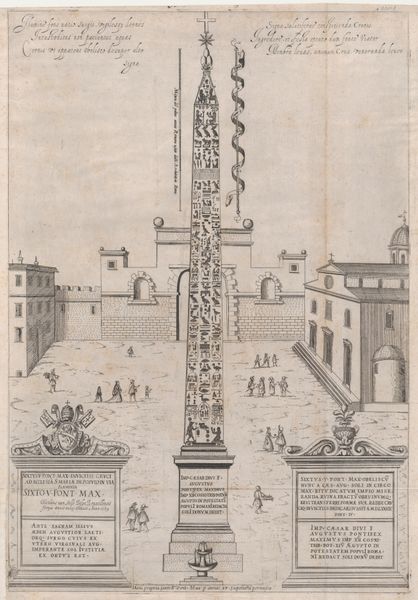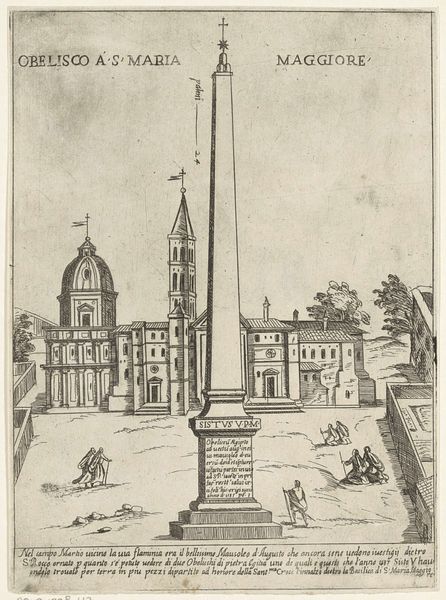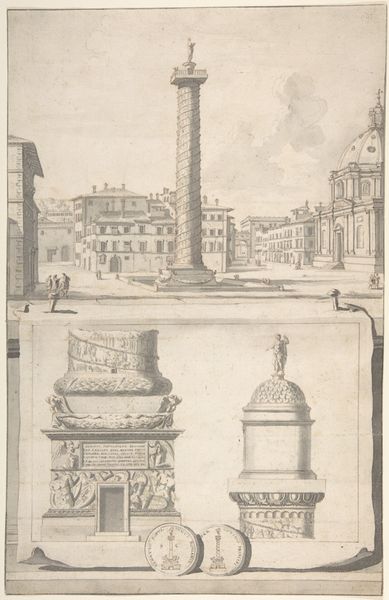
Speculum Romanae Magnificentiae: Column of Trajan 1589
0:00
0:00
drawing, tempera, print, engraving, architecture
#
drawing
#
tempera
# print
#
old engraving style
#
landscape
#
classical-realism
#
11_renaissance
#
column
#
cityscape
#
history-painting
#
engraving
#
architecture
Dimensions: sheet: 19 1/2 x 11 11/16 in. (49.5 x 29.7 cm) mount: 22 1/16 x 16 7/8 in. (56 x 42.8 cm)
Copyright: Public Domain
Editor: This is Nicolas Beatrizet’s "Speculum Romanae Magnificentiae: Column of Trajan" from 1589. It’s an engraving, with some tempera, depicting the famed column in Rome. It has an interesting stillness about it, almost like an architect's precise record. What stands out to you? Curator: What interests me most is how this print makes labor visible – both that of the original Roman sculptors and the Renaissance printmakers. Consider the sheer effort involved in extracting and transporting the marble for the Column itself, and then carving its spiraling narrative. Beatrizet's print, in turn, required a skilled artisan meticulously incising lines into a metal plate. We're seeing a chain of production, of material transformation. Editor: So, it’s about the act of *making* being displayed in different eras? Curator: Exactly. And about how an object’s value shifts. In antiquity, the column was a monument to imperial power achieved through military conquest. In the Renaissance, its meaning became entwined with the emerging print culture, its purpose transforming through the circulation of these engravings. Did these prints democratize access to antiquity, or further solidify elite understandings? Editor: That's interesting, the way the print mediates our understanding and relationship to Roman history. But, the cityscapes and text, did that require more laborers to create, or impact what the viewer saw in a certain way? Curator: Indeed! The cityscapes show a city undergoing architectural transformations itself! Think about the woodcutters and apprentices involved in that kind of volume. And, the inscriptions situate the column within Sixtus V’s agenda to restore Rome’s former glory. This wasn't a neutral reproduction but a powerful claim on history. How might that impact the contemporary viewer’s reception? Editor: So, it's not just a historical record but an active intervention! I hadn’t considered how the materials and the printing process contributed to its layers of meaning. Curator: Precisely! And seeing those layers is crucial to understanding not only this image, but also the relationship between labor, power, and art historical significance itself.
Comments
No comments
Be the first to comment and join the conversation on the ultimate creative platform.
